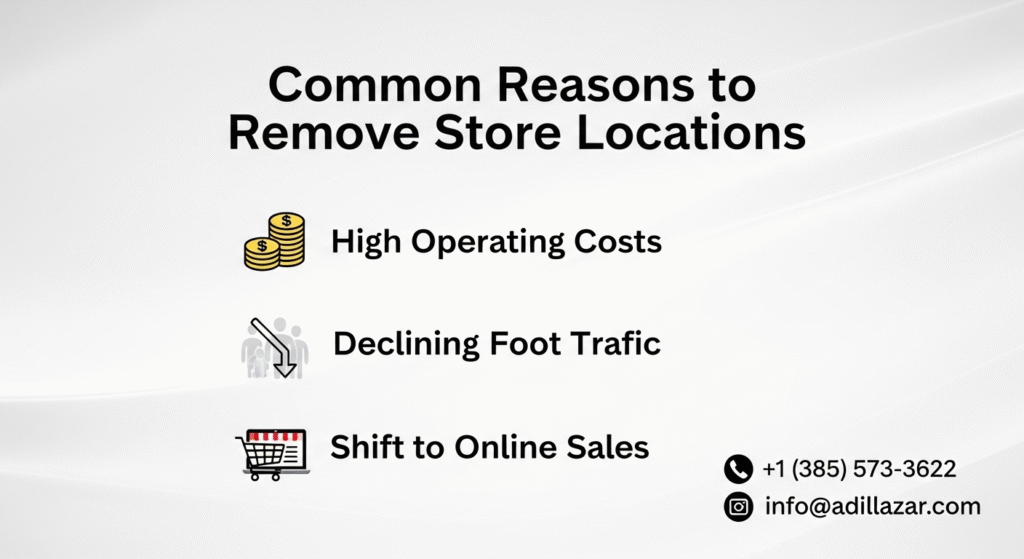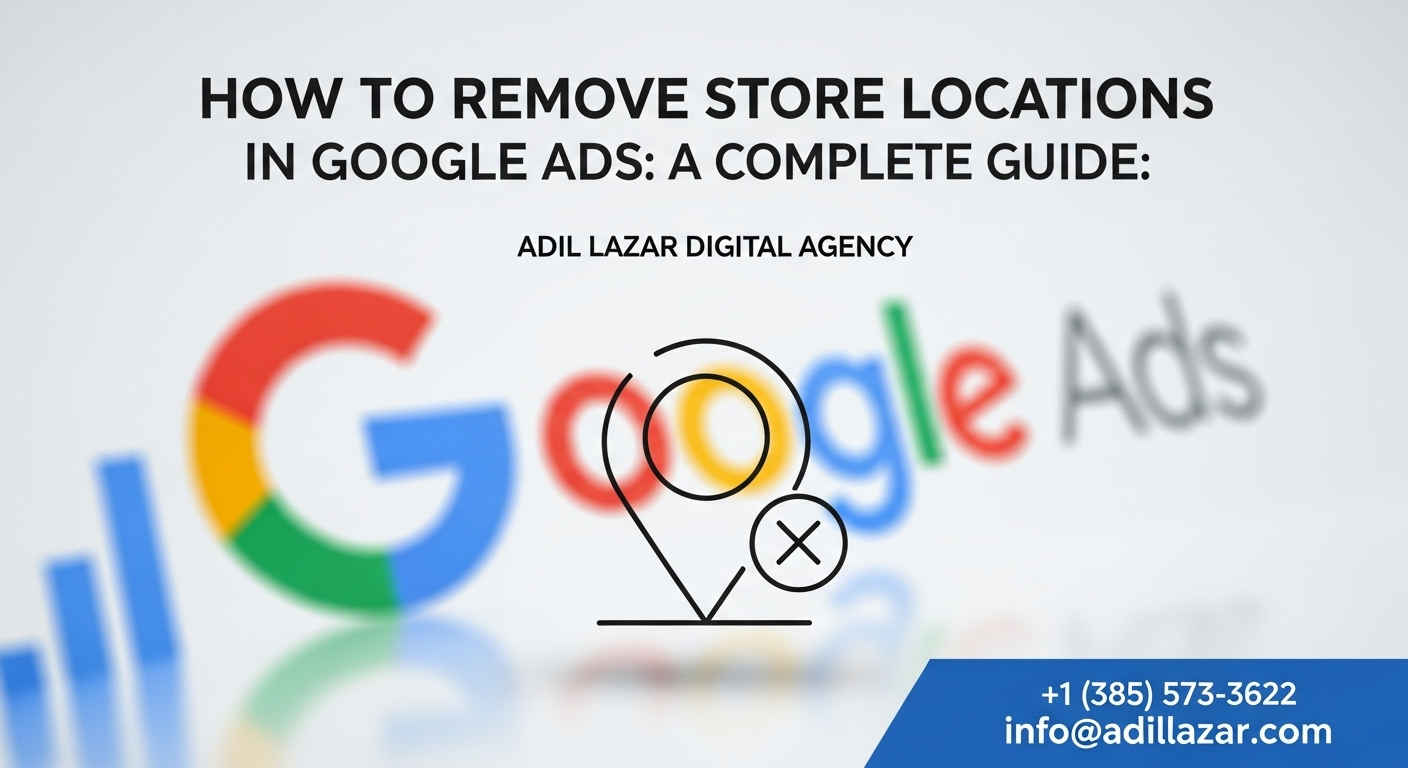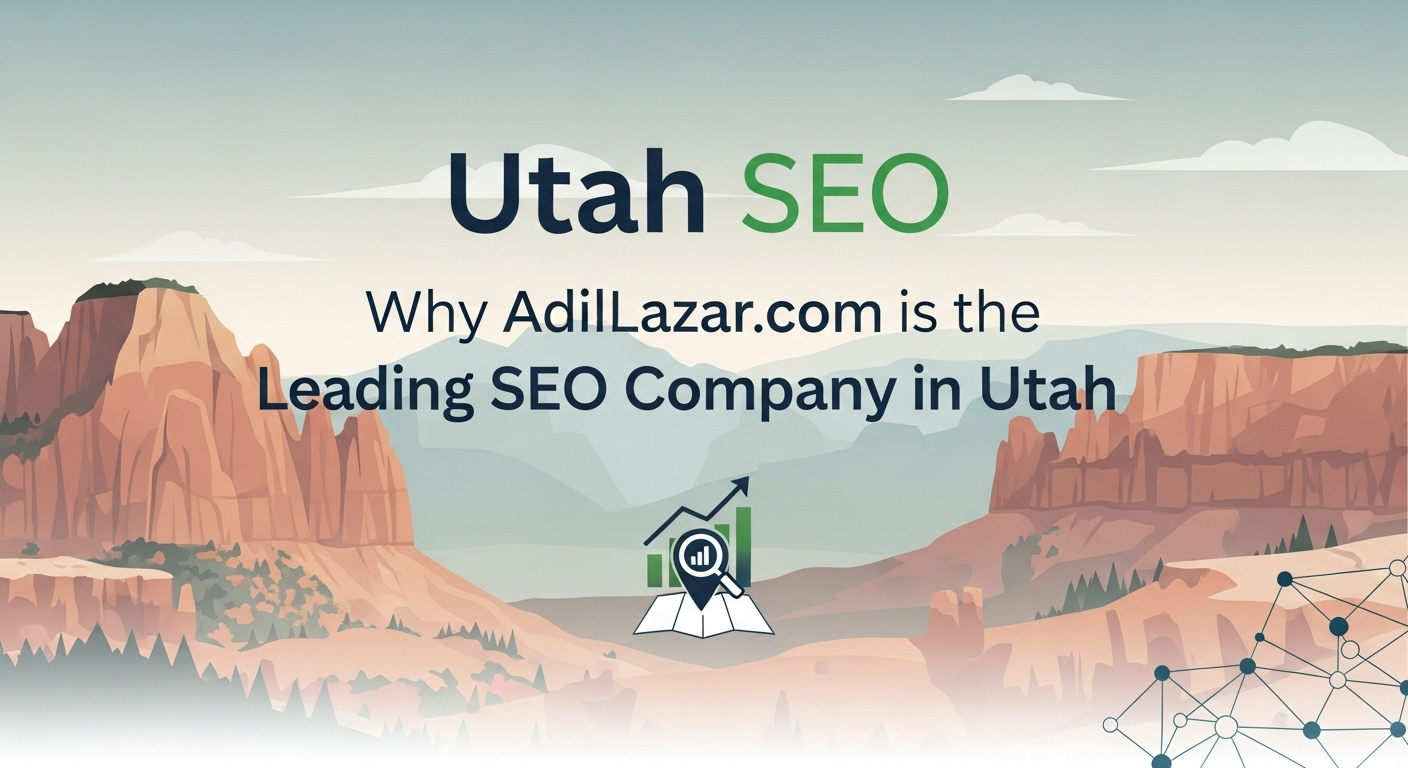Introduction
In the current digital age, local targeting in Google Ads can be a game-changer or an unnoticed budget sapper. Many companies begin creating campaigns using multiple stores linked with your Google Ads account, only to find that their ads are appearing in areas that they do not even serve.
Imagine that a local Utah bakery that pays for clicks coming from New York or Texas–money wasted and results discarded. This is what makes understanding how to get rid of stores from Google Ads is essential.
This guide will guide you through all the information you need to know about the importance of location extensions in order to manage connected Google Business Profiles (GBPs) effectively. If you find this to be too complicated, don’t fretyou’re not alone. Adil Lazar Digital Agency Utah’s reliable partner in advertising and marketing can assist you in fixing it one-for-all.
Why Store Locations Matter in Google Ads
Google Ads uses location extensions to show the business address, address, directions and distance to people who are near your locations. If done correctly this feature increases the number of people who walk through your doors and converts. However, if your campaign begins showing places you don’t service It can cause problems.
Businesses may join several Google Business profiles, or they misconfigure settings, causing ads to show unintentional information.
What did you get?
- Insignificant traffic.
- Poor ad performance.
- The ad budget was wasted.
That’s where learning how to remove store locations in Google Ads becomes crucial for every advertiser–especially for multi-location businesses.
Understanding How Store Locations Work in Google Ads
Before you begin removing something you have to be aware of what Google handles business places.
Once you have connected the Google Ads account with Google Business Profile (formerly known as Google Business Profile (formerly Google My Business), Google automatically pulls store details like:
- Names for businesses
- Addresses
- Telephone numbers
- Store hours
The locations will then be listed in the advertisement’s extension of the location as well as affiliate locations (if it’s a chain or reseller).
The automation can be useful, but it could also cause problems in the event that your ads are targeting the wrong customers.
Common Reasons to Remove Store Locations
Businesses decide to move or alter store locations due to different reasons. Here are some of the most common reasons:

- Incorrect or Old Business Information
- You’ve moved addresses or shut down an office.
- Multiple Location Conflicts
- Your advertisements are linked to a business Google Business Profile with irrelevant areas.
- Franchise Advertising
- You’re looking to promote one franchise and not each establishment in the chain.
- Irrelevant Targeting
- Advertisements are being displayed in areas that you don’t have a presence.
When you clean the store’s data you can not only improve your the efficiency of your campaign but also improve your advertising budget to generate high-quality leads.
Step-by-Step Guide: How to Remove Store Locations in Google Ads
Here’s an easy way to eliminate store locations that are not needed out of your accounts.
Step 1: Access Your Google Ads Account
Log in on Your Google Ads Dashboard. Go to “Ads & Extensions” – “Extensions” – “Location Extensions.”
Step 2: Check Connected Accounts
Then, under “Associated Google Business Profile” Under “Associated Google Business Profile”, you’ll see the business profiles that are currently linked to your Ad Account.
If you manage multiple clients or profiles You may find a variety of entries on this page.
Step 3: Remove Unwanted Business Profiles
To delete a place you need to click on the trash symbol on the right side of the business profile that you no more would like to use.
Confirm the deletion when you are asked.
This will disconnect the Google Ads from that Business Profile, instantly stopping any irrelevant store data from appearing in your ads.
Step 4: Filter Location Extensions
Sometimes, you may not want to completely remove your profile, but just certain places.
In that situation, you can go on to “Campaign Settings” – “Locations” and use filters to either exclude or include specific regions.
You can filter your search by:
- City
- ZIP code
- Targeting of the Radius (e.g. Only show in the 20-mile radius of Salt Lake City)
Step 5: Update Your Ads and Assets
After making any changes, go through your ad extensions and campaign. Make sure that all call-to-actions addresses, and numbers are in line with the exact stores’ location.
3 Common Mistakes Businesses Make
Here are a few pitfalls to avoid when taking care of your Google Ads places:
- Removal of all profiles accidentally This could result in a loss of the visibility of your ads in local results of searches.
- Advertisements that are not updated after Removal The ads you have placed might still have outdated location information as well as phone numbers.
- Doing nothing to Google Business Profile Ownership You will require administrator access to delete or delink profiles with ease.
Why Managing Store Locations Impacts ROI
Every click costs money, and every insignificant impression lowers the ROI.
If you’re Google Ads show for irrelevant stores, you’re paying to target customers that who you don’t want to serve. As time passes, this leads to:
- Higher CPC (Cost Per Click)
- Lower Quality Scores
- Reduced conversion rates
If you ensure that you ensure that your store’s locations are precise and optimized By ensuring your store’s location is accurate and optimized, you will assist Google to place ads in the areas that matter the most.
Real-Life Case Study: Utah Retailer Cleans Up Its Google Ads
Client The Utah-based Outdoor equipment retailer.
The issue:
Their Google Ads displayed places in Colorado and Nevada, two states they weren’t serving. This meant they were losing 25 percent of their monthly advertising budget.
Solution by Adil Lazar Digital Agency:
- The client’s Google Ads and linked Google Business Profile.
- Eliminated store locations that were not related to each other and optimized the extension of location.
- Geo-targeted campaigns that focus on the main cities of Utah.
Results:
- 32% less wasted advertising.
- 44% more conversions in just the initial 45 days.
- Better Quality Score and more local visibility.
This shows that efficient managing the location of Google Ads is not only technical, but it’s actually strategic.
Why Adil Lazar Digital Agency Is the Go-To Expert in Utah
Before we get into the questions, let’s take an instant to look at the reasons Adil Lazar Digital Agency is now an extremely respected digital partners for national and local firms.
Based out of Utah, Adil Lazar Digital Agency is a specialist in:
- Google Ads management
- Local SEO
- Web development
- App development
- Marketing strategies that are creative and brand-new
What Sets Them Apart
- Local Expertise Global Vision – They are familiar with the Utah market, yet they work with international standards.
- Transparent Pricing – No hidden costs. Clear deliverables. Real ROI.
- data-driven decisions Every optimization is backed up by data analytics and quantifiable outcomes.
- Customized Strategy No cookie-cutter templates. Just specific campaigns specifically tailored to your target audience.
Companies choose Adil Lazar Digital Agency because they can deliver results, not just promises. Whatever it is, custom application design, SEO and Google Ads optimization their aim is to make growth in digital affordable and affordable.
If you’re having trouble to manage your stores or your advertisements aren’t generating enough revenue in the wrong places, Adil Lazar’s marketing strategists can help you clean up and optimize your marketing campaigns in a matter of minutes.
FAQs About Removing Store Locations in Google Ads
Q1: How do I unlink one particular store without delinking the entire Google Business Profile?
Yes, you are able to use filters within the campaign’s “Location settings” to exclude certain areas or stores, without having to erase your entire profile.
Q2 What happens if eliminate all locations?
Your ads will no longer show local extensions, such as directions or addresses. This won’t affect your ads, but it might reduce the visibility for search results that are based on location.
Q3: When change take before changes show changes in Google Ads?
Most often within a couple of hours, but it could take as long as 24 hours to complete synchronization.
4. Do I require access to an administrator account to delete locations?
Yes. The only Google Ads admins or owners who have connected Google Business Profile access can remove or delink stores.
Q5: What can I do to avoid this issue from happening again?
- Review monthly the settings for your location.
- Restrict access to the Google Ads account.
- Make sure you keep the information on your Google Business Profile up to current.
- Choose a reputable agency such as Adil Lazar Digital Agency to run your campaigns effectively.
Conclusion
Being aware of how to get rid of the store’s location in the Google Ads isn’t only about cleaning your account. It’s about making sure that your marketing budget functions more effectively rather than harder.
With accurate location information, your ads will only show in the places they are supposed to, ensuring to reach customers who are real and increase conversion rates.
For Utah companies as well, having a dependable digital partner such as Adil Lazar Digital Agency can make all the difference. In everything from managing Google Ads through SEO branding along with web-based development their team will ensure each click, every impression and every dollar is counted.
Are you ready to improve your Google Ads and reduce wasted advertising?
Visit AdilLazar.com today–because your business needs better marketing and not more.





